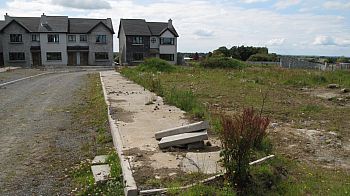In this post Lorenz Gollwitzer, Research Student at SPRU, discusses with us his recently published paper that introduces a new methodological and theoretical foundation for studying the reasons for successes and failures of community-based micro grids.
 I am standing in Olosho-Oibor, a small village three-hours from Nairobi, at the bottom of the Ngong Hills(famous as the place where Denys Finch Hatton crashed his plane and died in Karen Blixen’s autobiography Out of Africa). Beeping in my pocket, my smartphone has just received an email, yet the nearest connection to the national grid is about 15km, or a three to four hour walk away. The contrast between my rural surroundings and the wireless 21st century couldn’t be starker. But unlike many people – not only in Kenya, but in large parts of Sub-Saharan Africa – the villagers of Olosho-Oibor do not need to make that long walk to charge their phones or LED lanterns, thanks to a solar-wind hybrid micro grid they have been successfully operating since 2009.
I am standing in Olosho-Oibor, a small village three-hours from Nairobi, at the bottom of the Ngong Hills(famous as the place where Denys Finch Hatton crashed his plane and died in Karen Blixen’s autobiography Out of Africa). Beeping in my pocket, my smartphone has just received an email, yet the nearest connection to the national grid is about 15km, or a three to four hour walk away. The contrast between my rural surroundings and the wireless 21st century couldn’t be starker. But unlike many people – not only in Kenya, but in large parts of Sub-Saharan Africa – the villagers of Olosho-Oibor do not need to make that long walk to charge their phones or LED lanterns, thanks to a solar-wind hybrid micro grid they have been successfully operating since 2009.
Rates of electricity access in Sub-Saharan Africa continue to be extremely low, even compared to other developing regions. The International Energy Agency (IEA) estimated in 2011 that just under half of the total global population lacking access to electricity lives in Sub-Saharan Africa, amounting to almost 600 million people. The situation in Kenya is not atypical for many countries in Sub-Saharan Africa. Electrification rates in rural areas are estimated to be between 5-10% and the national grid operated by the public utility Kenya Power is already operating beyond capacity, causing rolling blackouts as well as in some cases nationwide blackouts.
Read Lorenz’s full blog post here or download the full working paper.
Follow Sussex Energy Group


 Today is the last day of the 5th international conference on Sustainability Transitions which is held in Utrecht, the Netherlands. During one of the last panel sessions of the conference I will present a new paper which reviews the existing literature on the politics of sustainability transitions and then argues that there is much to learn from the scholarship on international political economy (IPE). I suggest that it is important for transition scholars to explore connections with related areas of scholarship to avoid becoming too ‘insular’ and because such connections will foster new ideas, research questions and conceptual developments. Read more ›
Today is the last day of the 5th international conference on Sustainability Transitions which is held in Utrecht, the Netherlands. During one of the last panel sessions of the conference I will present a new paper which reviews the existing literature on the politics of sustainability transitions and then argues that there is much to learn from the scholarship on international political economy (IPE). I suggest that it is important for transition scholars to explore connections with related areas of scholarship to avoid becoming too ‘insular’ and because such connections will foster new ideas, research questions and conceptual developments. Read more ›





